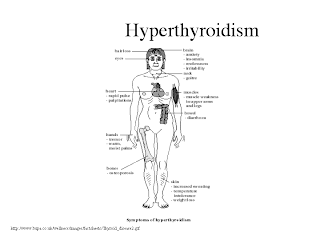Benign Intracranial Hypertension in MRCP
I always remember that benign intracranial hypertension is a popular topic in
MRCP Part 1 and 2. Recently, my wife was studying her FRACGP and I noticed that BIH is one the hottest topics as well.
Since this illness is so popular and important, I think we should spend sometime talking about BIH today.
OK, why we say intracranial hypertension is benign?? When there is intracranial hypertension, we anticipate there will be some problems inside our craniums, however, if there is presence of intracranial hypertension without any obvious intracranial mass or enlargement of ventricles or hydrocephalus, we term the illness as
BENIGN ( it won’t kill you!!) intracranial hypertension.
There are a few facts to remember for BIH,
Fact 1:
Remember that majority of patients are young female who are obese and usually in your MRCP, they will give you an example of an obese lady with acne. Why acne?? I always wondering when I was a medical student. After struggling for many years, I finally understood this. The reasons are, some anti- acne actually cause BIH such as
teteracycline, Vitamin A and drugs that can precipitate acne formation such as steroid also lead to BIH!!
Fact 2:Although we were taught that papilloedema is an emergency if patient has headache. Remember that patient with BIH has headache and papilloedema ( although rarely they might have blurring of vision and seizure) but it is benign and the brain imaging and CSF are normal.
Fact 3:
Since patient with BIH is always a young female patient, you must put sagittal sinus thrombosis as your differential diagnosis. This is because you also anticipate young ladies are prone to get autoimmune disease especially SLE and they are usually on oral contraceptive pills and these put the ladies at risk of developing sagittal sinus thrombosis.
Fact 4:
Treatment is easy, stop the drug and weight reduction but you may use loop diuretics or acetazolamide.
Example of question:A 22-year-old obese woman presented with an 8-week history of headaches, pulsatile tinnitus and transient visual loss on standing lasting a few seconds. She had otherwise been well with no history of note. She took the oral contraceptive pill and had been taking this for the last 6 months and used salbutamol inhalers on an occasional basis for her asthma which she had from childhood. She also took vitamin Asupplements which she bought over the counter for her general health. On examination, the only abnormality of note was bilateral papilloedema. MRI brain and MR Venogram are normal. Lumbar puncture showed an opening pressure of 38, normal protein, glucose, and cells.. What is the most likely diagnosis?
1 )Herpes simplex encephalitis
2 )Intracranial hypertension secondary to vitamin A
3 )Malignant meningitis
4 )Sagittal sinus thrombosis secondary to OCP
5 )Sagittal sinus thrombosis secondary to SLE



 Patient with unilateral foot drop
Patient with unilateral foot drop

 I think the general principles of treating hyperkalemia are simple,
I think the general principles of treating hyperkalemia are simple,



